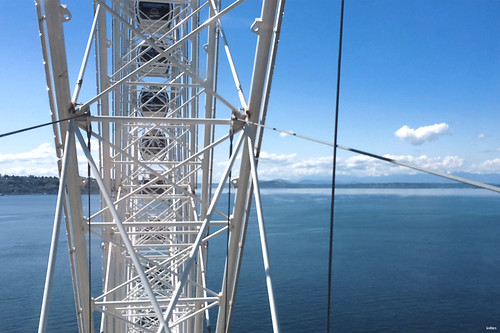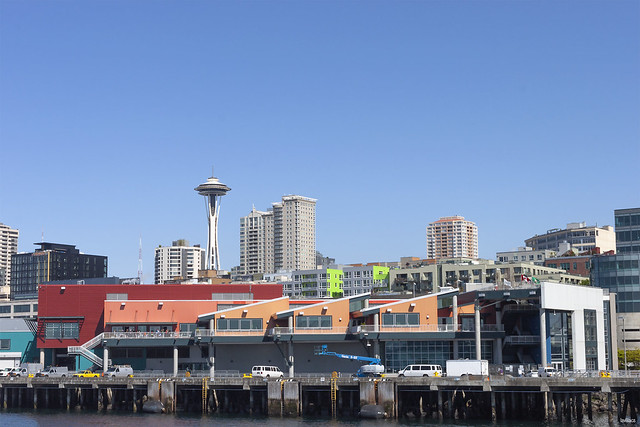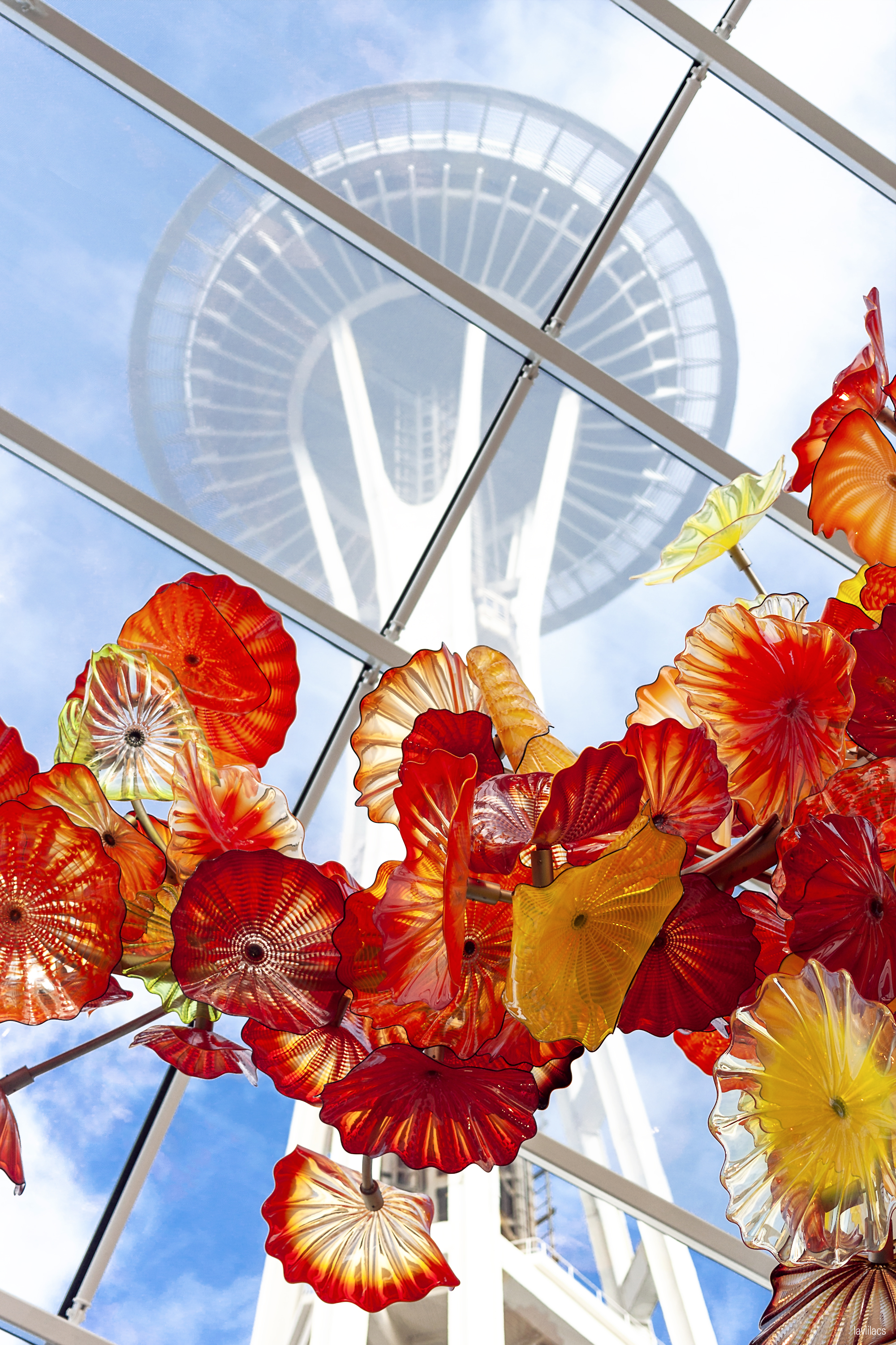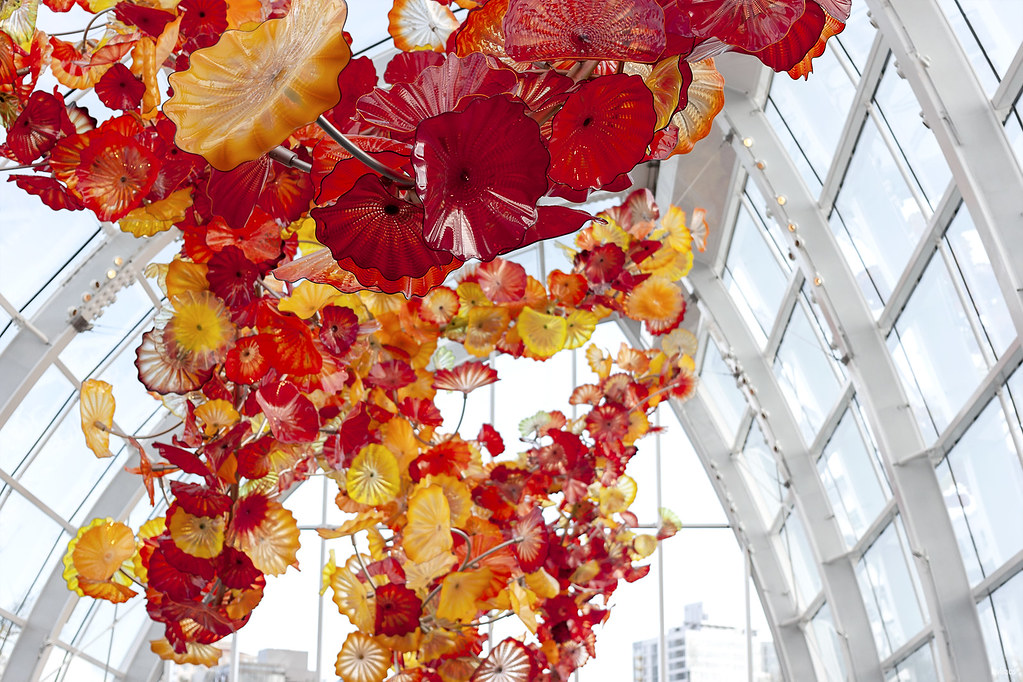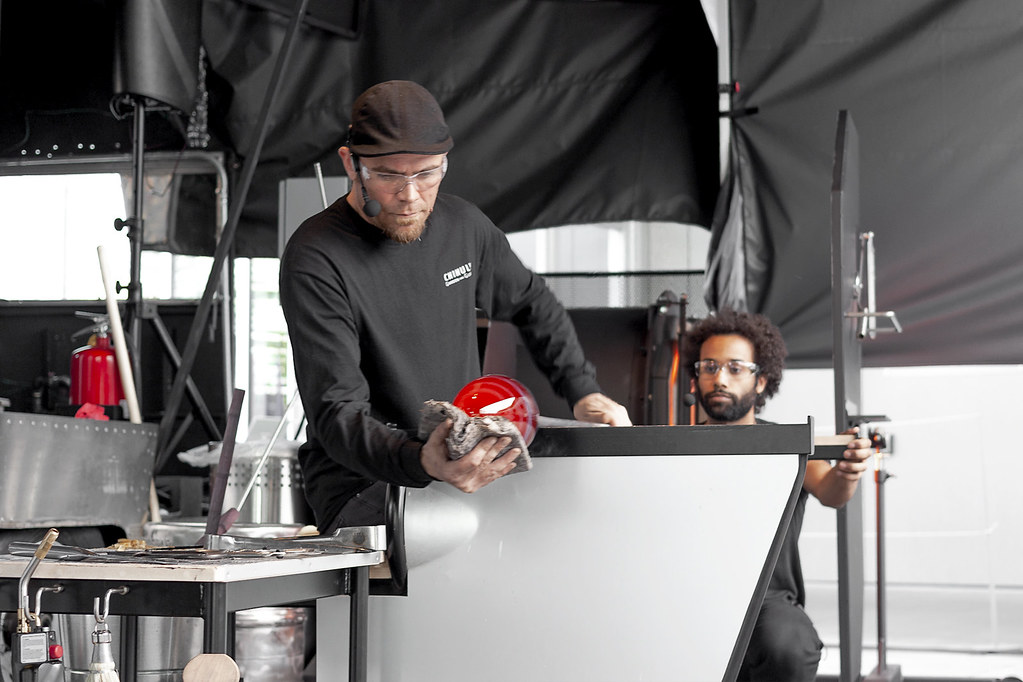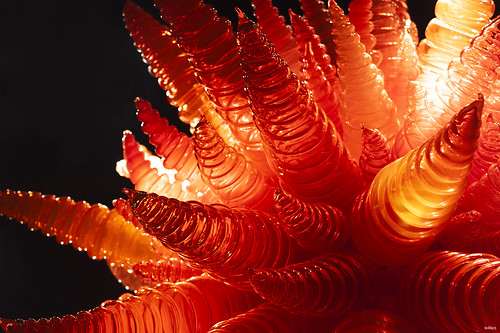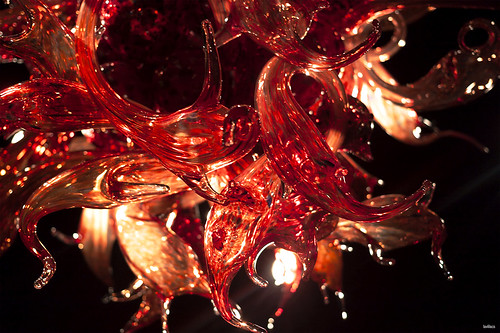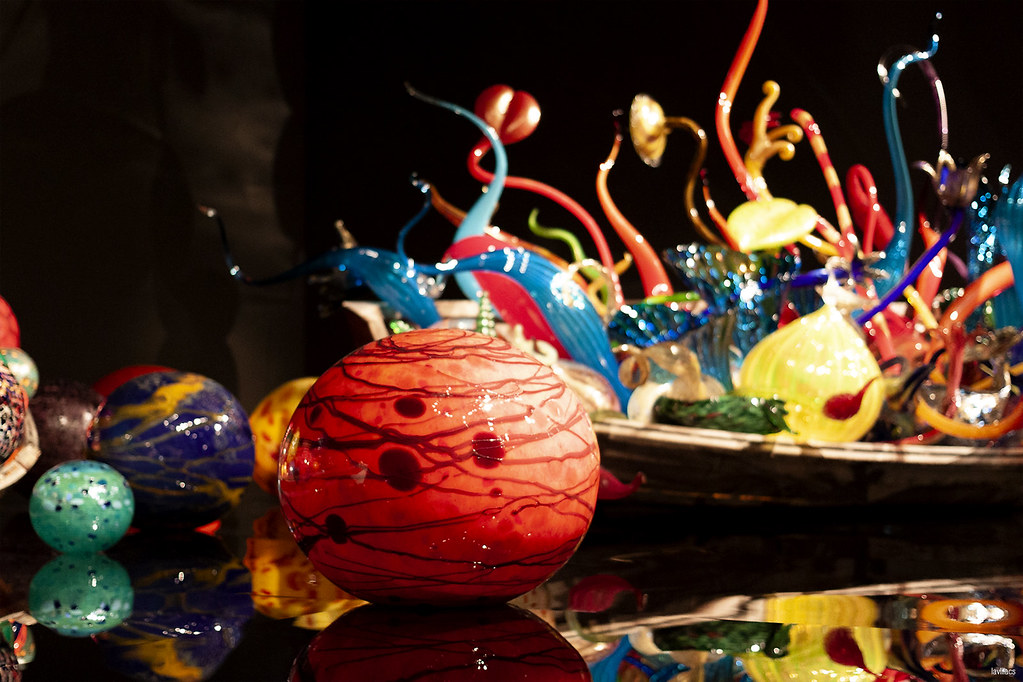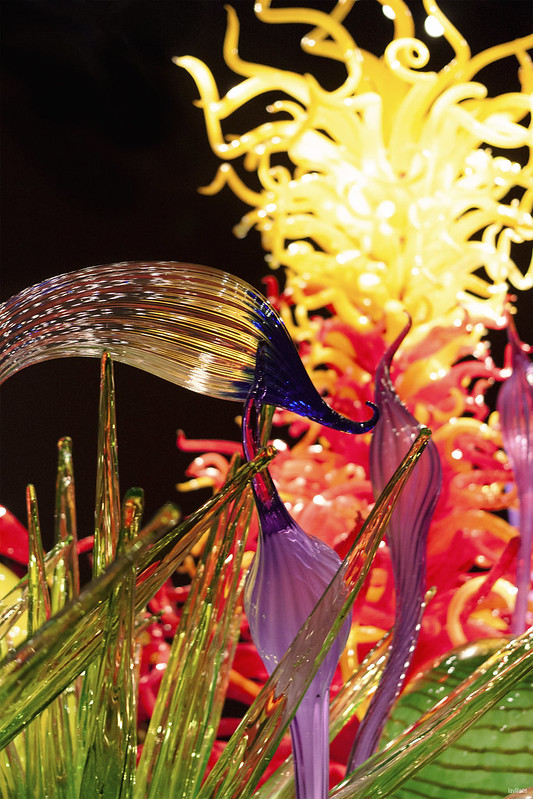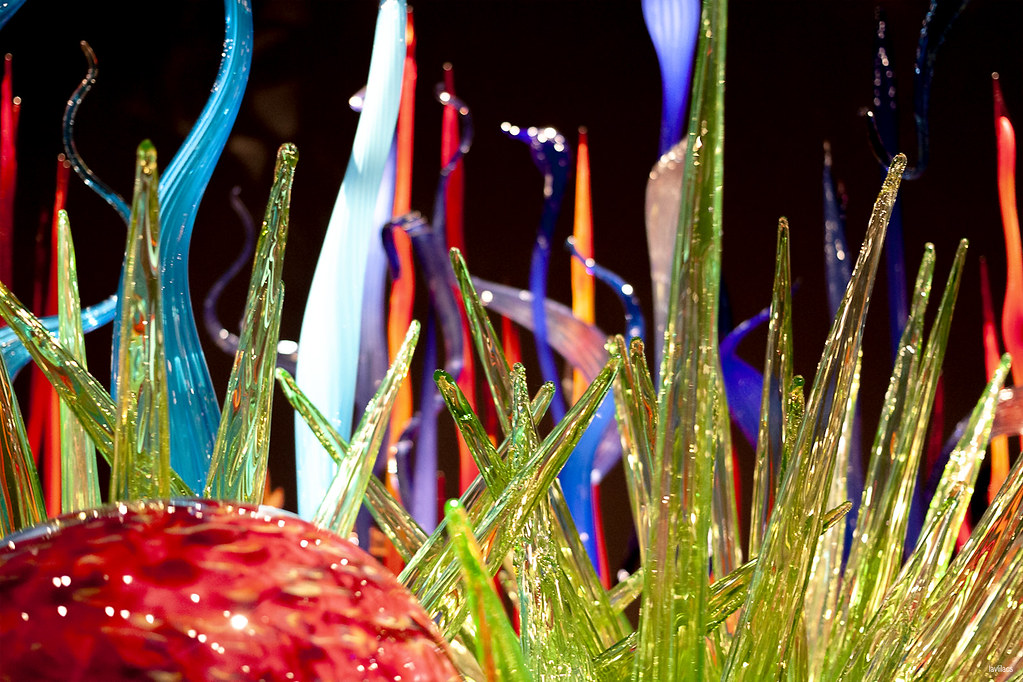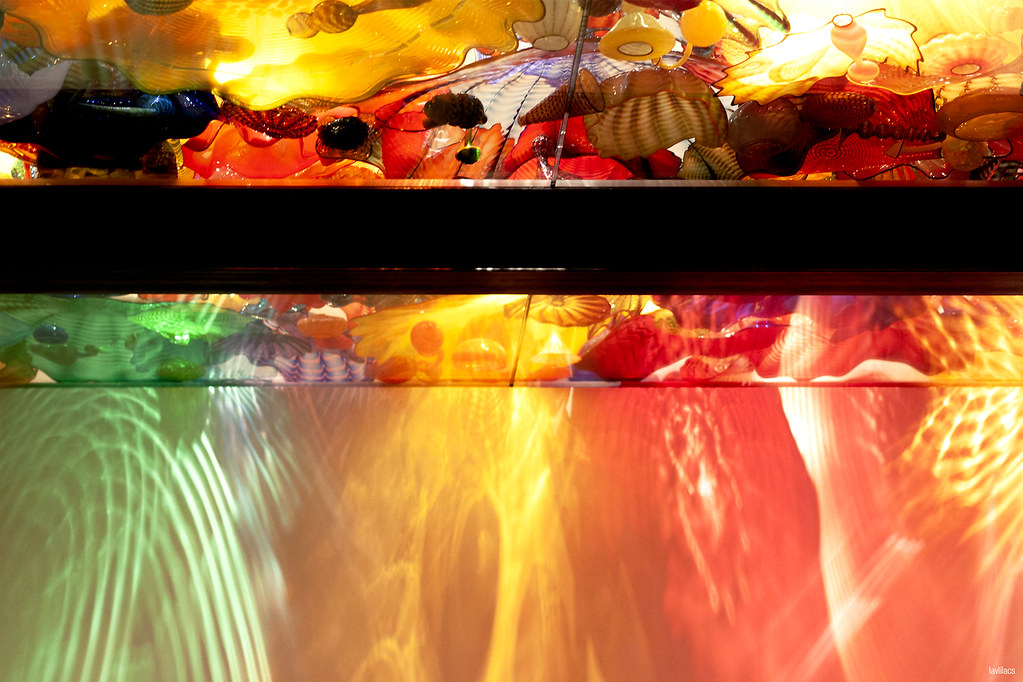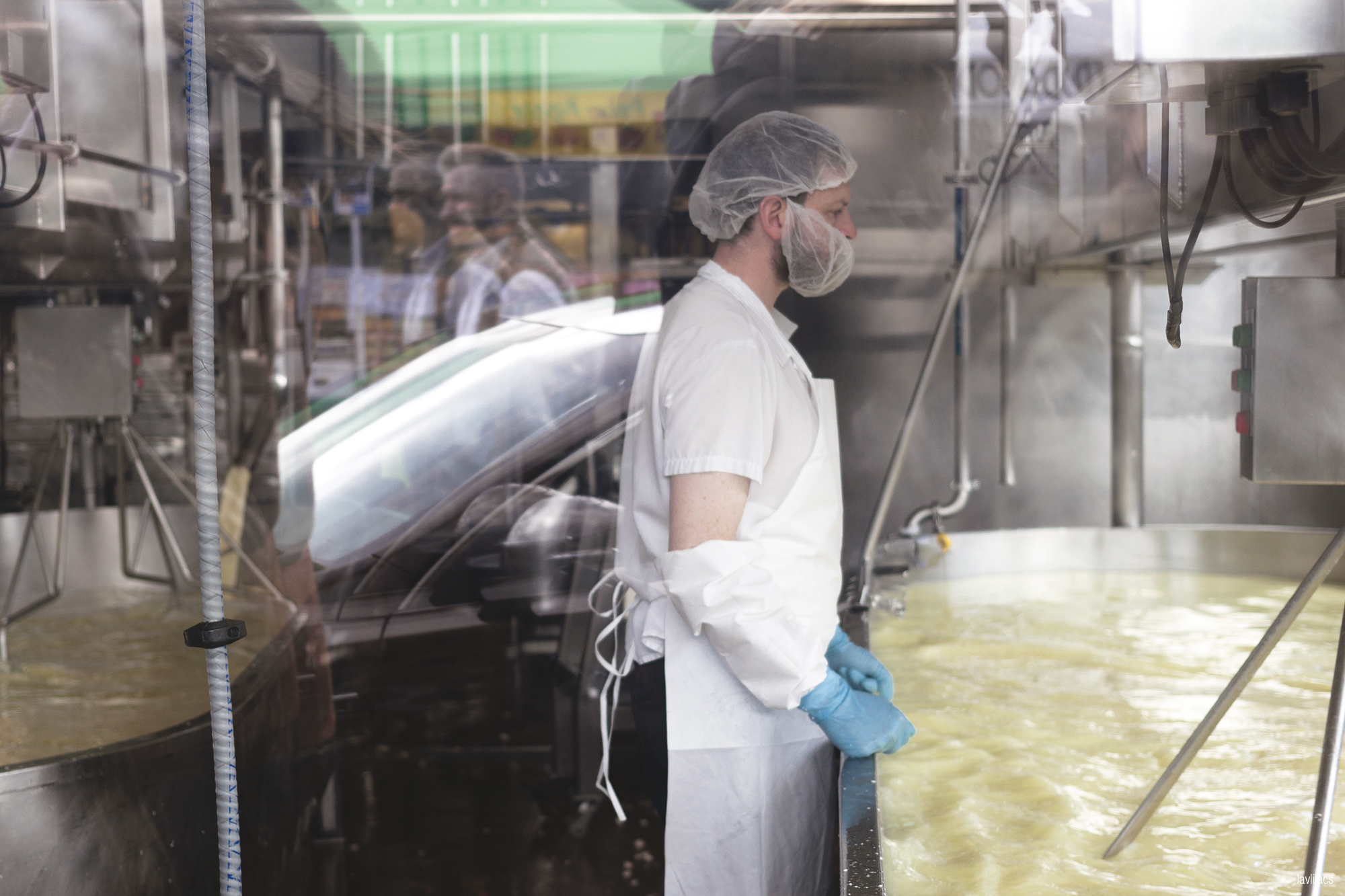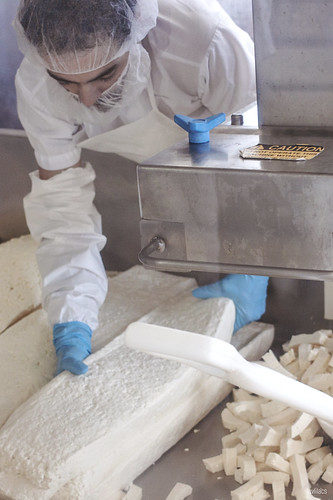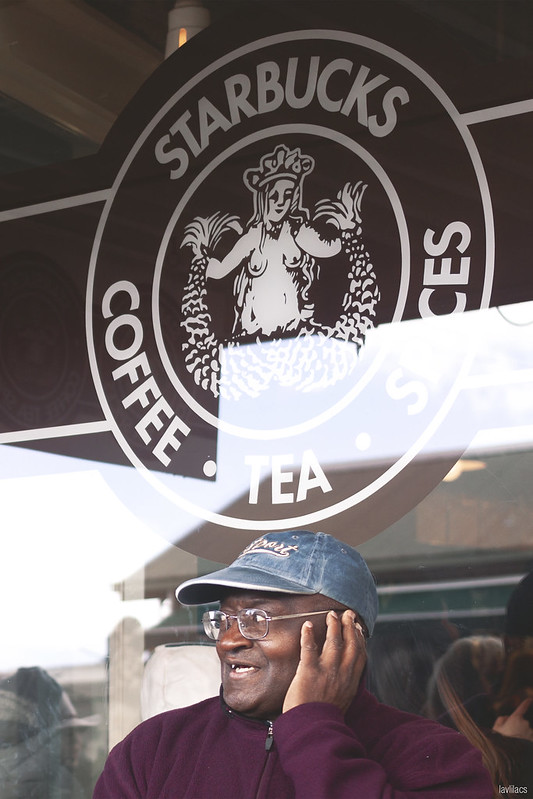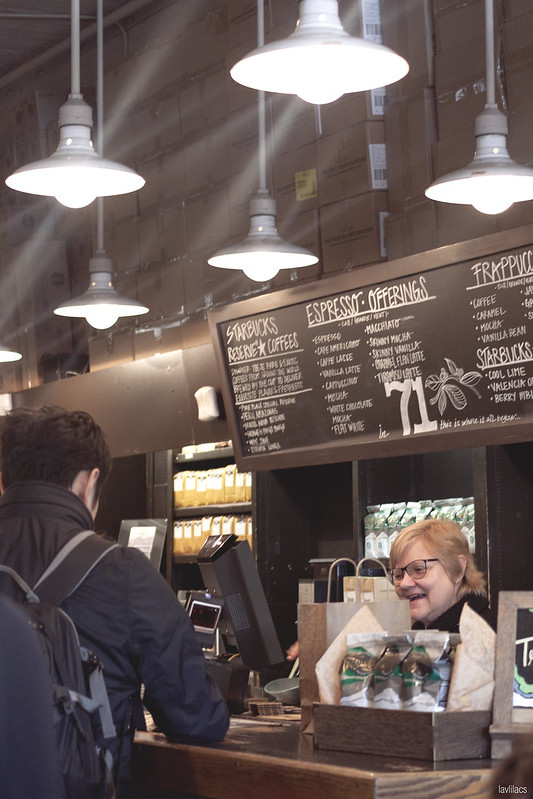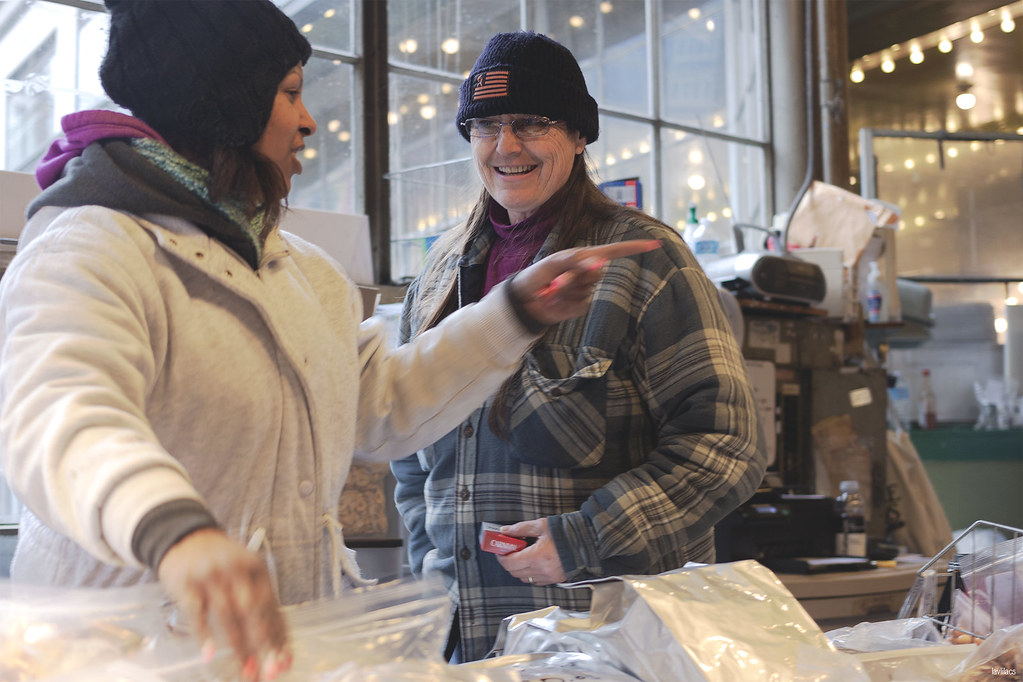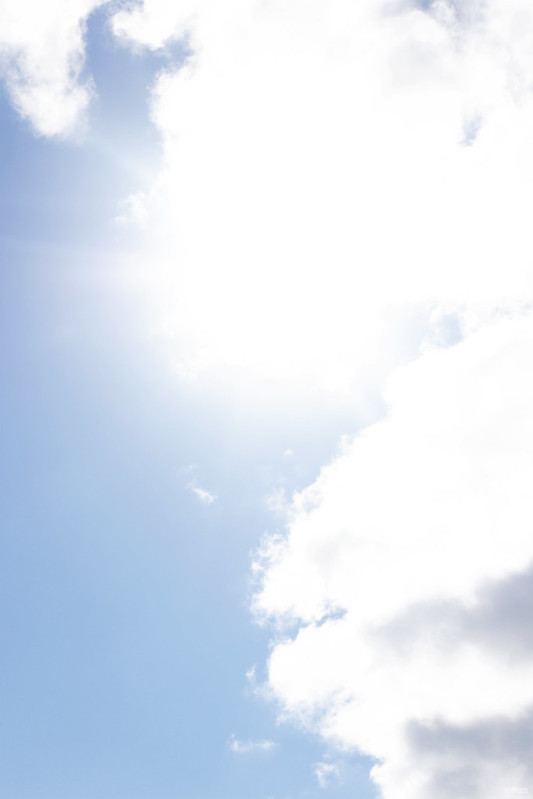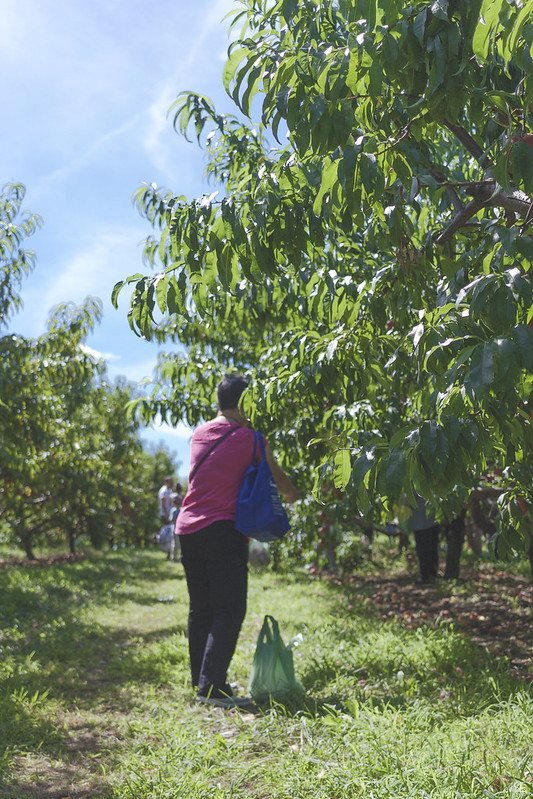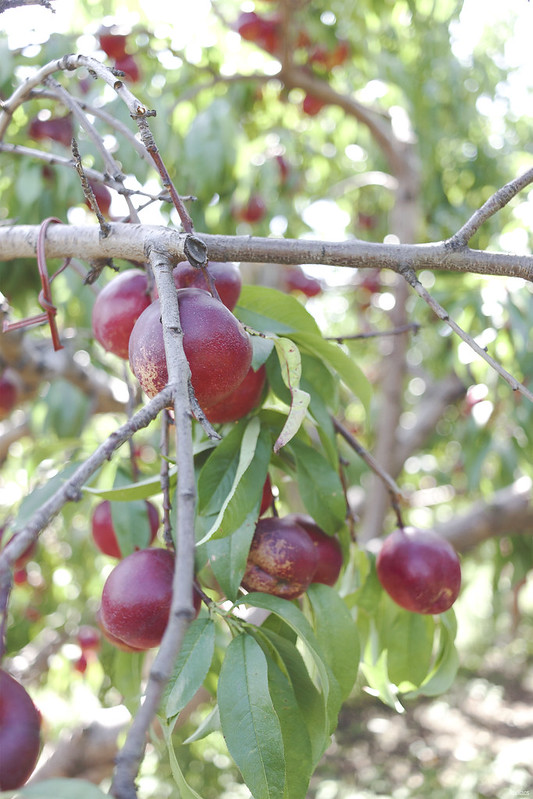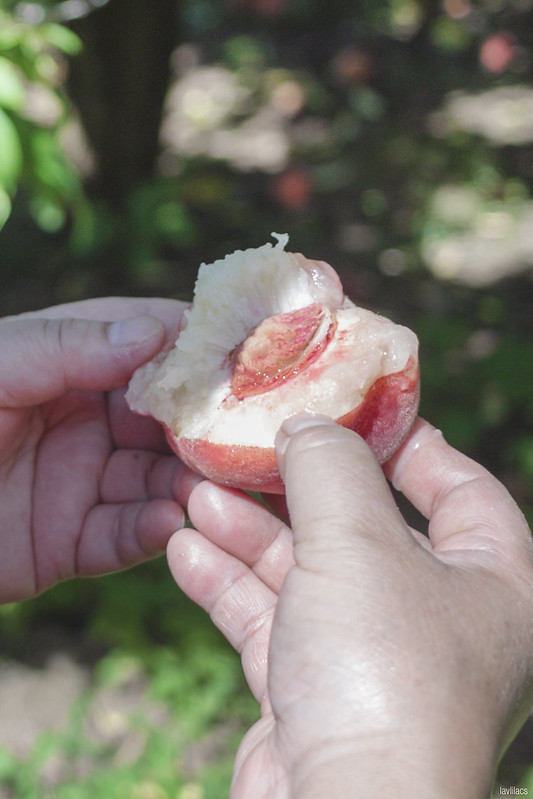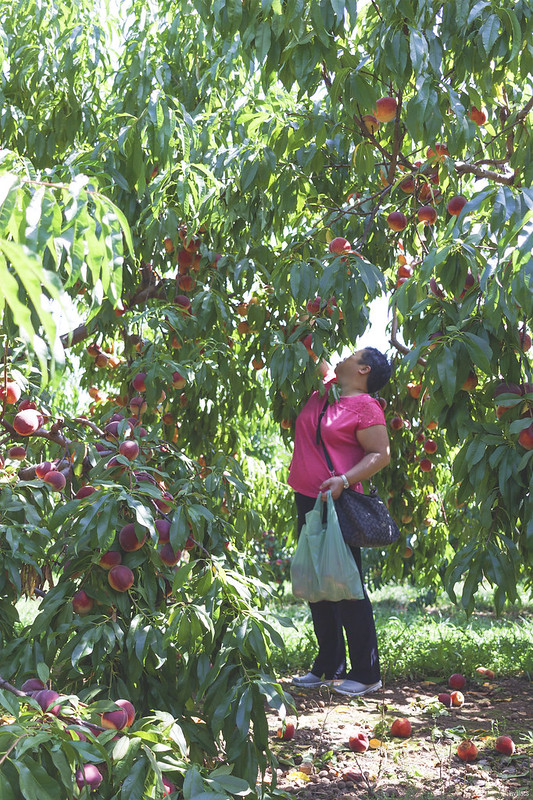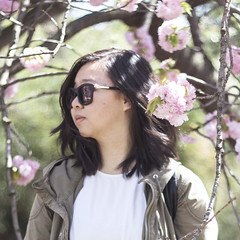Seattle is known to be a rainy city. Pair that with the Spring season and showers now seem all too likely to wash away any outdoor plans when visiting a new city. I went prepared for wet weather and was greeted with mostly blue skies and a glowing sun. Talk about luck!
When the water was so cooperative, it seems almost criminal to not take advantage and view the city via all angles with different types of "transport".
Seattle Great Wheel
Adult tickets $14. Situated on Pier 57. The Great Wheel is ginormous in size and offers vast views of the Puget Sound. (According to wiki) The Ferris wheel was supposedly the tallest on the West Coast at the time of its opening. It felt calming to see nothing but water and nature yet honestly there were moments I felt a little nerve-wrecked to ride as the carriages end up going over the edge of the pier as it circles around.
Harbor Tour, Argosy Cruises
Adult tickets ~$31. Also a part of CityPASS $89. Departs from Pier 55 (which is next to the Great Wheel). Can be a bit pricey but I think it is a typical price for a boat tour. It is definitely worth it when using the Seattle CityPASS. I liked being able to see the overall skyline of Seattle as well as the extra commentary provided by the guide. The ride lasts about an hour.
Space Needle
Adult tickets $29. Also a part of the CityPASS $89. Available in other tourist bundles. Without a doubt, this is Seattle's most famous landmark. The tower is impossible to miss amongst the city's skyline. Tourists feel obligated to visit even if they don't go atop it. This is a great location to start a Seattle trip with as the view from the circular observation deck shows a different side of Seattle no matter where visitors stop and stare.
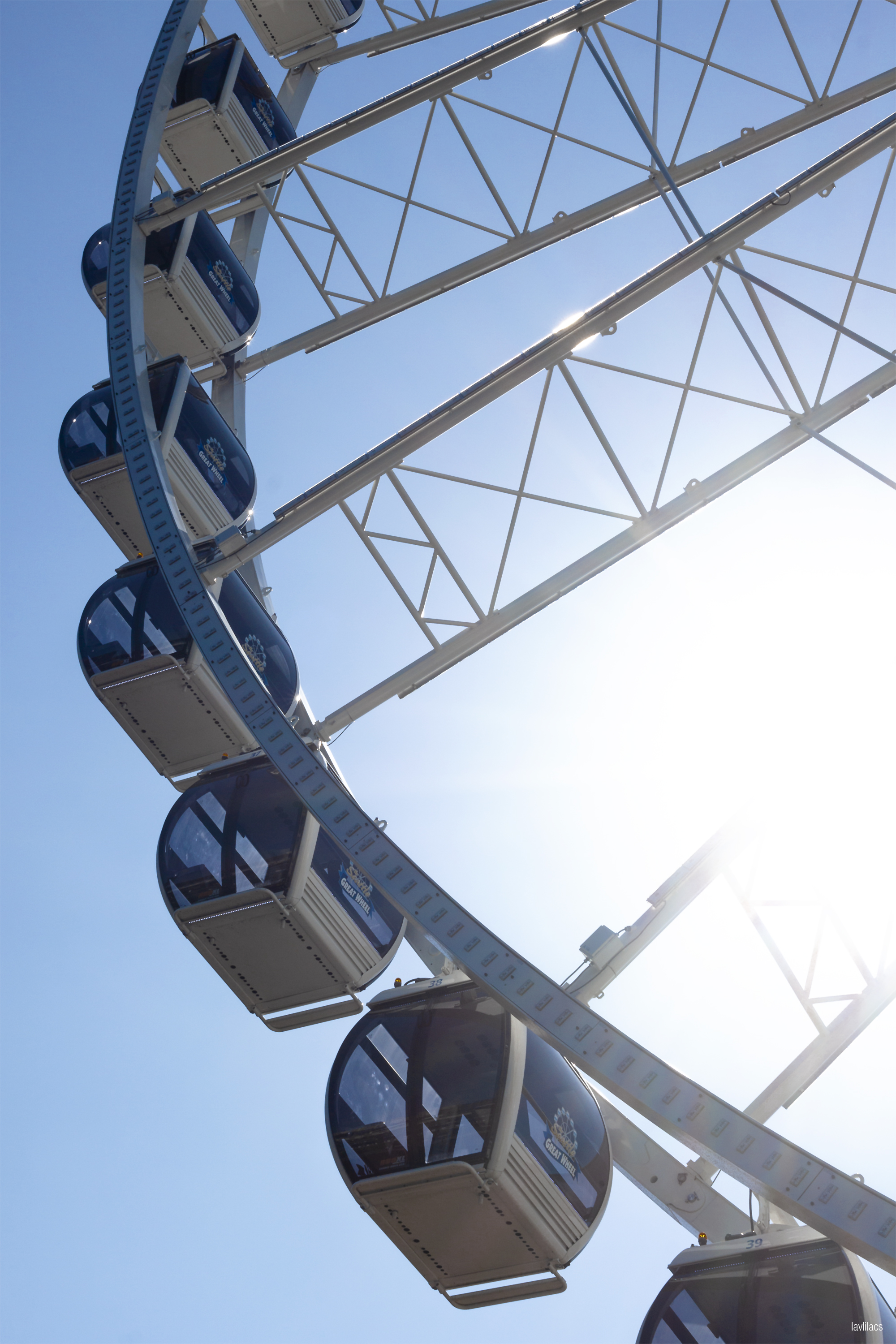
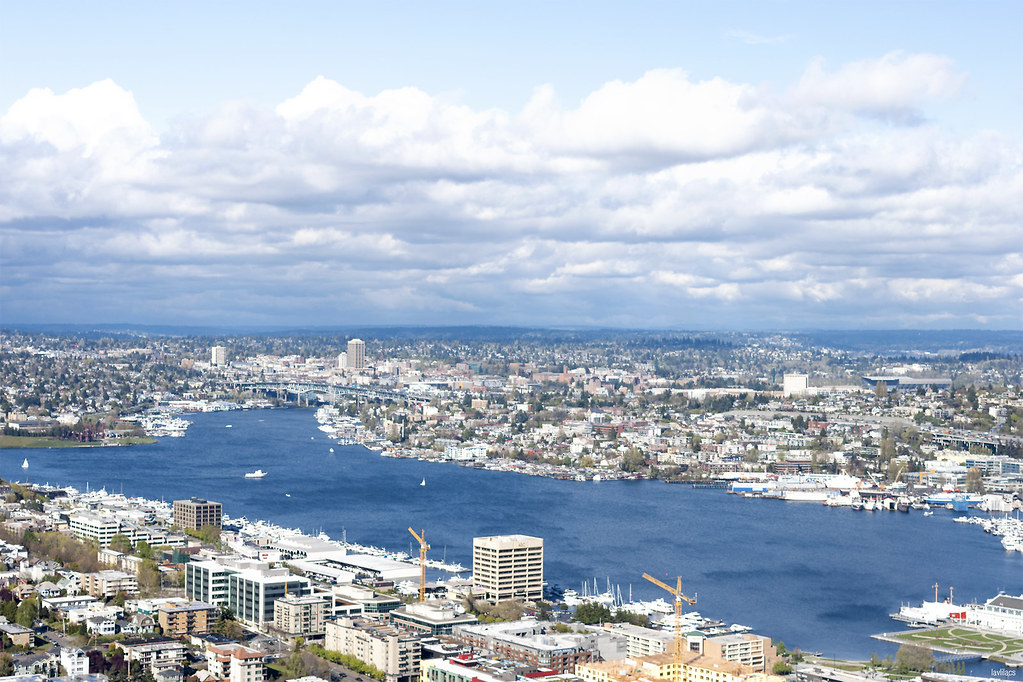

To take nothing but pictures
To kill nothing but time
To leave nothing but footprints
A change of pace from what I have been posting thus far in 2018. It has actually been almost a year since I last edited non-beauty, travel related photos. I guess I lacked the motivation to share since those posts aren't generally the most viewed on the blog.
An unsaid resolution I had for this site, along with trying to post at least once a week, was to share whatever the heck I wanted regardless of how well or terrible it would be received. I am not an influencer nor monetize from this teeny blog. It is and has always been, first and foremost, a place where I stored my thoughts and memories.
I have done fairly well with the consistency goal (until this month); here goes to shyly greet the ever more personal side of my life (even if I randomly share images from years ago).

RoozenGaarde
15867 Beaver Marsh Rd, Mt Vernon, WA 98273
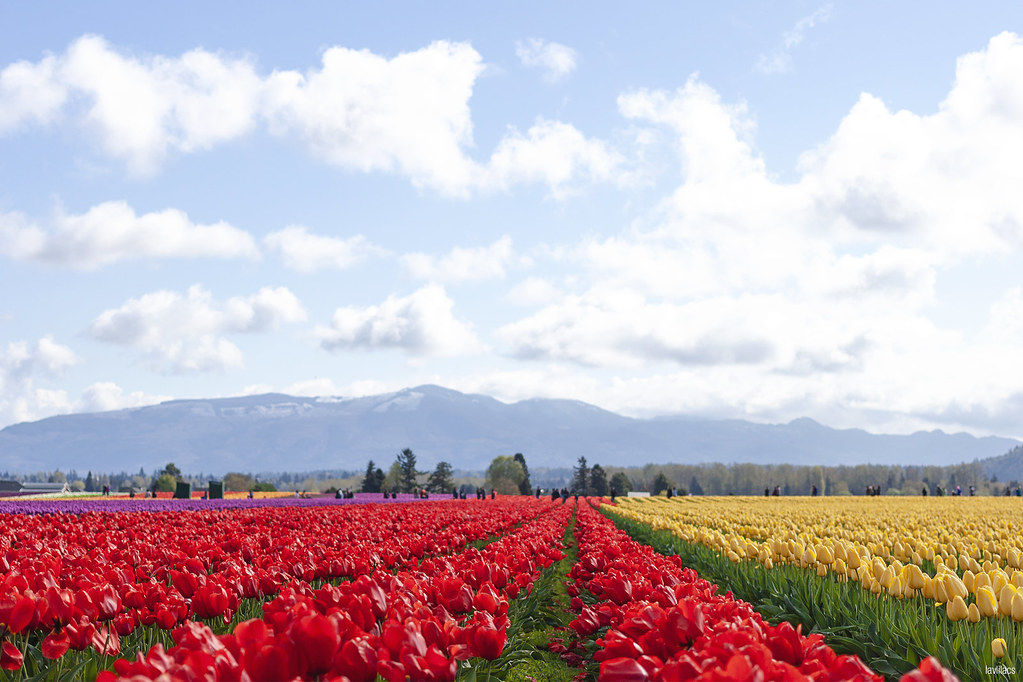
My family and I visited the Pacific Northwest three years ago to the day. This was a trip of many firsts. It was our first time to Seattle, Vancouver, and nearby cities. It was the first overnight trip we'd taken together in six years. It was the first trip we rented a car and drove around. It was the first trip I had the job of setting some kind of an itinerary.
So much responsibility. So much stress. So many options. So many people's different interests to consider. So many unanticipated meetings and reunions with friends and family. Maybe being ferried around on bus tours wouldn't have been that bad?
The peace and nature that is the Pacific Northwest though, is an environment that is hard to stay stressed in. All the greenery and bright skies are hard to be grumpy in. Of course, Seattle is known to be rainy but it uncharacteristically was not when we visited. I can never imagine living there because of the potential allergy attack I would have to all the pollen but for the brief week or so we were there the lively colors and relaxed lifestyle (when compared to New York City) was a breathe of fresh air.
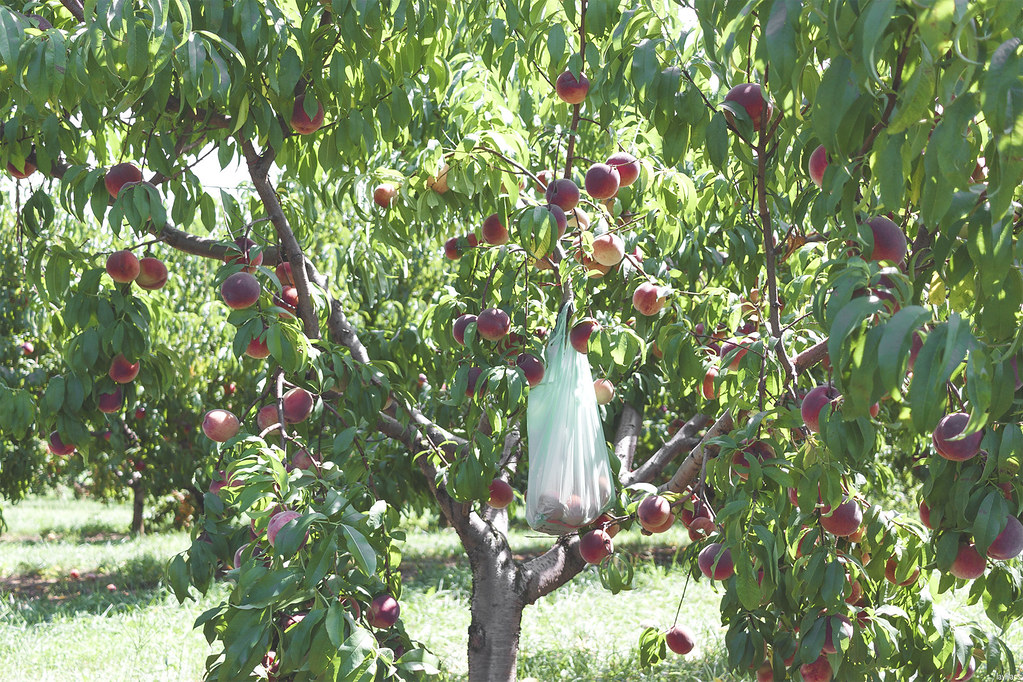
One area of food that I lack the most knowledge in is with fruits. Yes, the sweet and juicy, vitamin packed produce that mostly grows on trees. Why? Because I grew up eating a very limited variety of them all-year round. Thanks, uncommon allergies! Fruit seasons might as well not exist for me; otherwise, I would miss out on the chance to fill my daily sugar allowance with preferably natural ones.
This doesn't mean that the opportunity to go fruit picking doesn't still excite me. As long as it isn't pollination season and not departing for the farm at 6:30 AM on a hot summery day, I am far more willing to be outside in nature and farmland than just a few years earlier. I might not be able to consume the fresh fruits but my allergies aren't so bad so I could still touch them and be fine.
Mid to late summer is, apparently, the perfect time for peaches and nectarines. I saw them more often in our fruit basket throughout July and August but didn't know if my mom had sudden cravings or sales were too good to resist, usually meaning it's their season and time to shine. It only clicked after the parentals said we were going on a peach picking day-trip. We joined a bus tour that brought everyone from New York City to Lyman Orchards in Middlefield, Connecticut.
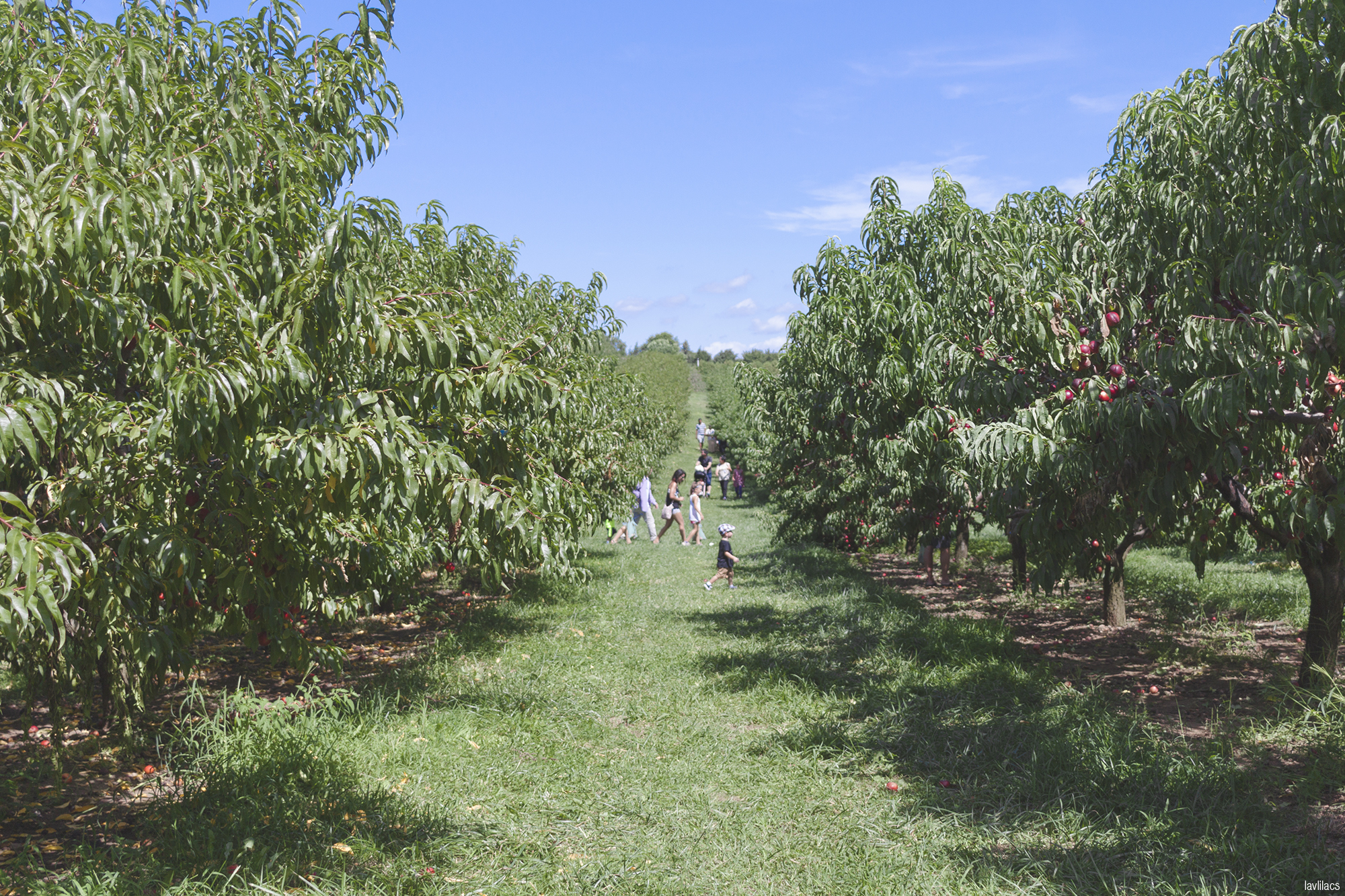
The orchard must be doing something right since they are celebrating their 276th year anniversary this year, 2017. Even though we went with a tour group, there were many families who drove to enjoy the day outdoors as well. It seems to be quite popular amongst the local state residents nearby.
Seeing the rows and rows, acres upon acres of the orchard is just breathtaking. Our bus only allotted enough time for peach picking, but the orchard had PYO peach, apple, and pears the day we went. Lyman's also has a nearby marketplace that sells fruits, baked goods, pantry items as well as BBQ sandwiches. For those looking for activities, the orchard has a golf course and sunflower/corn maze nearby. The maze seemed fun but the day we visited was a little too cloudless to bear the thought of potentially getting lost inside.
The director said that all picked fruit should be paid for first but I would say a majority of visitors had very generous samplings as they went on their picking frenzy. Staff weighs everyone's loot by the entrance/exit and the bags are paid per pound. I believe all peaches were ~$1.50/lb. (give or take) when we visited.
Lyman's has both white- and yellow-flesh peaches (furry) and the same for nectarines (smooth). Since I couldn't eat them, the differences between the variations that I knew were all superficial. Wiki does say the white ones are less acidic and sweeter. My mom recommended us to only pick and purchase firmer ones since these fruits ripen and soften even after picking. It is also wise to keep the peaches and nectarines well protected in the car ride home as any sudden thrashes will surely cause it to bruise.
My biggest regret is not purchasing one of their apple pies and peach crisps/cobblers. It is supposedly an award winning recipe. I got to taste their peach crisp a la mode at the marketplace and it was delish! If only I didn't buy it at the last minute and the bus wasn't on a schedule to leave. Bummer... Perhaps next time?
It's mid-week and I cannot stop thinking about sunny food-filled weekends. Even though Smorgasburg at any location is usually unbelievably crowded, there is nothing else like it where a group of friends can disperse and buy a bunch of treats to share picnic style at the park. It is hard to pick a wrong spot when each of the 20 something odd vendors are handpicked by the organizers. Some are brand-spanking new Smorgasburg-exclusive food ventures and quite a good bunch are long-time Smorgasburg favorites.
Call it a tourist trap if you'd like. Crowded and expensive it definitely is. But then again so is a majority of the eateries in the rest of New York City. To each their own! The best I can recommend is to pick a good time to visit either their Williamsburg or Prospect Park location. The earlier it is, the less packed it will be. Most people are probably still asleep at 11 AM on a Saturday or Sunday. If an Instagram trendy vendor is a must-try, pre-noon is a wonderful time to avoid lines. They only get busier and busier as the day progresses. The only other times when crowds are small and lines short is when the forecast is dreary. While most vendors do end up showing up, the number of visitors who turn out pales in comparison. Downpours aren't fun for anyone; drizzles are perfect.
Tastes

Raindrop Cake. The hype for this water jelly last year was unreal. I get it, the perfectly smooth round blob looks beautiful in person and in photos. The taste is refreshing and light—a stark contrast to typical Western delights that are carby and creamy. But if you really think about it, this is just congealed water with syrup and soybean powder and it costs almost $10. Make some at home with honey and peanut powder.
If experimenting in the kitchen isn't your thing but you "gots to have", split one amongst 2+ friends. Otherwise it isn't worth it even for a photo.

Carnal. There is something so primitive yet so satisfying about being served meat on the bone. Short rib is one of my favorite types of beef, but I have only ever had it braised and grilled. Smoked and slow-cooked is something completely new to me. Having such a large slab of short rib is even more uncommon.
Don't be fooled by their sign; even though it is described as Beef Short Rib with Bone Marrow, the meat part is the star. Don't even think about being civil. Going hands in and gnawing is the best option. The ligament that holds the meat to the bone is not quite cooked down enough in this fashion to eat with a fork and knife. Pack a toothpick or flosser, be prepared to stand on a long line, and get ready to munch on some good meat.

Mofon•GO. My favorite part about Smorgasburg is discovering new foods. I tend to gravitate more towards Asian flavors whenever I search Yelp, especially if dining in Manhattan. Even though I would love to try other cuisines, the number of options and unfamiliarity to the menu is intimidating. Vendors at Smorgasburg, however, are specialized. Many have 1-3 item menus and the variety comes in the form of toppings and sides.
Mofongo refers to the Puerto Rican dish of fried mashed plantains and stuffed with meats. The one we tried was filled with fried pork and served with sriracha mayo. I think they currently offer it with shredded pork. I am not sure if I am not a fan of mashed plantains or if this could have used something juicier/saucier. I remember it being on the drier side. Is this normal for mofongo?
Craves
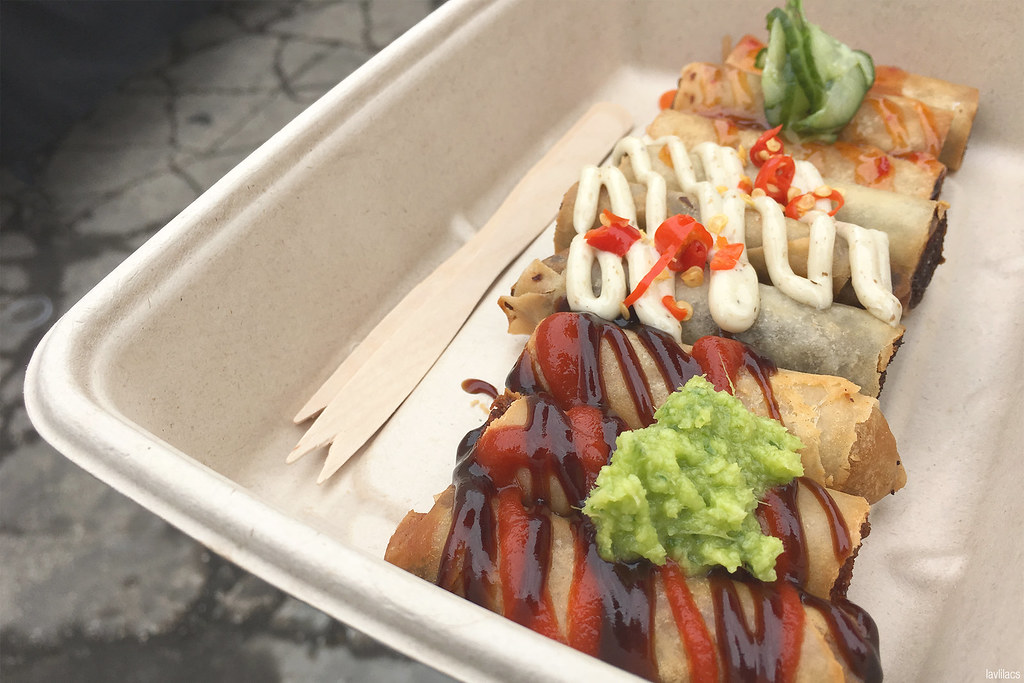
Lumpia Shack. Hands down favorite at Smorgasburg that my friends and I get at least once every year we visit. Skinny lumpia is pure love and joy. If frying foods at home wasn't so messy, I would gladly make and stock my freezer with these babies.
Although Lumpia Shack is must-have in general, it isn't a must at Smorgasburg if you'll ever be around the West Village and Washington Square Park as they have a Lumpia Shack Snackbar nearby.
Goa Taco. I wish I knew about the deliciousness that was paratha tacos earlier even after taking just one bite. Even though I have eaten scallion pancakes before, it was just a dish on its own. Wrapping it around meats and veggies is ingenious, might I daresay even better than standard corn tortilla tacos! The flatbread is crispy but still has flaky chewy layers.
Like Lumpia Shack, Goa Taco has 2 storefronts in the Lower East Side and Greenwich Village. If the crowds at Smorgasburg are unrelenting and there are other vendors to try, take a walk across the Williamsburg Bridge afterward and grab Goa Taco on the other side.
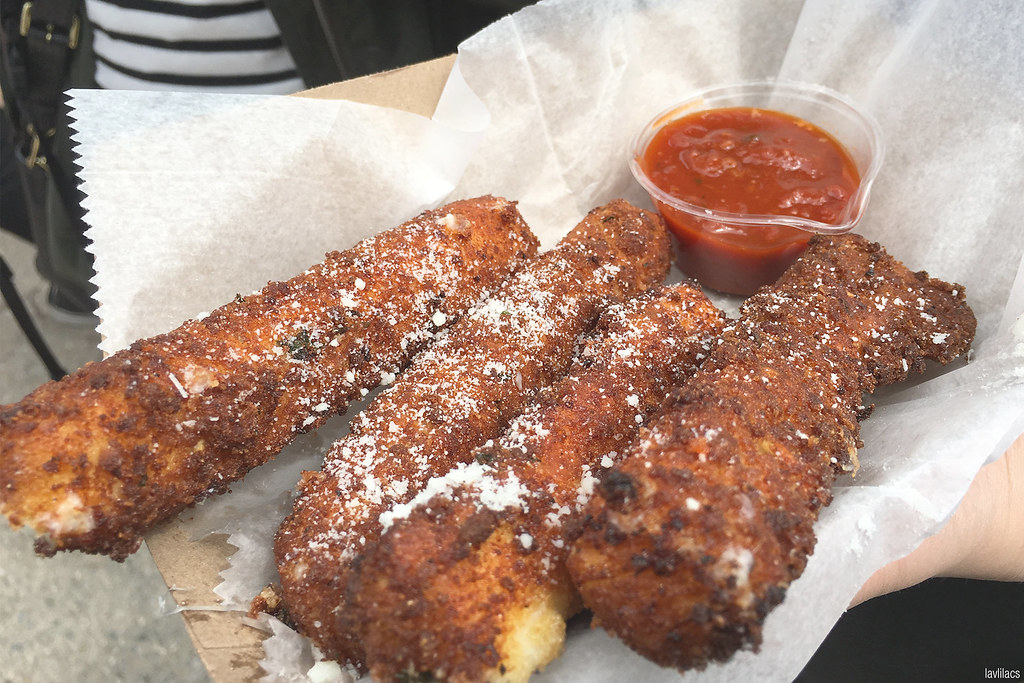
Big Mozz. How can anyone not like fried cheese sticks? Lactose-intolerant excluded. These are giant and heavy in all respects. The mozzarella core is the chewiest and stretchiest. Yet it is worth all the calories.
Wishes
Since I haven't gone to Smorgasburg yet this year, here's a list of a few new vendors I want to try.
Burrito Juárez. I just love food wrapped with anything carby. They supposedly make their tortillas fresh and don't stuff with rice (which is usually what a majority of burritos are filled with).
Kreung Cambodia It is still Asian eats but Cambodian food is definitely something new even in New York. I think I read somewhere that said profits made go back to helping the owner's farm in Cambodia.
Ube Kitchen They had me at ube. I won't deny my bias towards anything purple. While halo halo seems easy enough to put together at home, the hardest part is having just enough toppings on hand to not be eating the mixed dessert all week long.
Rutte's Dutch Waffles Stroopwafels are the perfect combination of everything I like: sugary, gooey, and crispy but soft. I've only ever dreamed of having it fresh and hot. All my praises to the person who finally brought the made-to-order version of the Dutch treat Stateside!
Dulcinea Churros & Co. Because one ice cream snack is never enough for an ice cream monster. Although, I am sure I would regret wishing for an ice cream sandwich. My sensitive teeth and (assuming) the hot sun will not make good friends with this sweet treat. Regardless...it looks delicious!
The idea of stuffing our faces silly with nothing but our hands could sound archaic to those who are used to utensils and pre-portioned plates. Oh...all the germs and dirty hands! I am a firm believer in the notion of "big germs eat little germs" (it sounds better in Chinese 大菌吃小菌 ); a little bit of bacterium will only add to build immunity.
In reality, there are many cultures that have eaten with their bodily utensils for, probably, centuries. It isn't any less unmannered or uncultured, just a different set of customs: using only a specific hand, pinching rice with specific fingers, scooping meat in a particular way, and the list goes on. If the whole table does the same thing, then is it really weird anymore?
I would imagine everyone's inner kid would especially love this style of eating—so much freedom to lick the leftover sauces from your fingertips and savor every last bit. No one has to pretend to be neat and tidy either. The life!
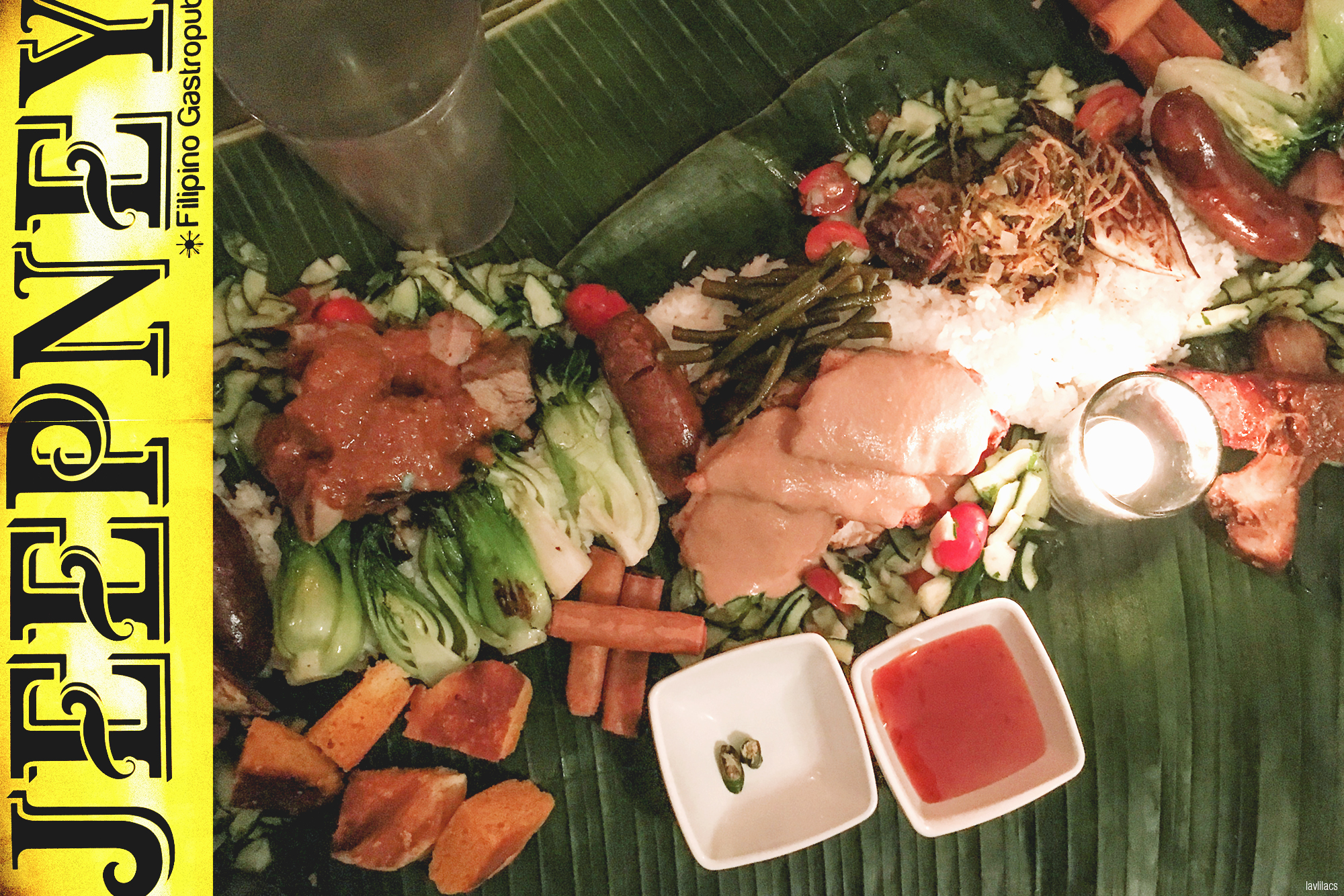
Jeepney is a Filipino Gastropub in New York City's East Village. They have normal plated service every day. On Wednesdays and Thursdays of the week, and if specially reserved otherwise, the restaurant offers what they call Kamayan Night. This does require an inquiry for reservation ahead of time via a dedicated form on their website. If the availability is right, they will reply via e-mail with a link to another form for a proper reservation. Then you and your party of 4+ could decide on what foods to pre-order.
Just to clarify, I know next to nothing about Filipino culture and cuisine so I could be slightly off. Kamayan style eating is synonymous with family and get-togethers. It is also a type of meal that is reserved for special occasions, but everyone is still familiar with. People gather around a table that uses banana leaves for tablecloths and ladened with rice, meats, veggies, and other finger foods. This was perfect for my friends and I because we were celebrating 2 birthdays and a new job.
Yelp reviews say that Kamayan Night is very popular; reservations made way in advance is highly recommended. We must have been quite lucky since I made the actual request for a reservation only a few days beforehand. It could also be that we chose a time earlier on in the night (6:30 PM). Communication with Jeepney was very speedy.
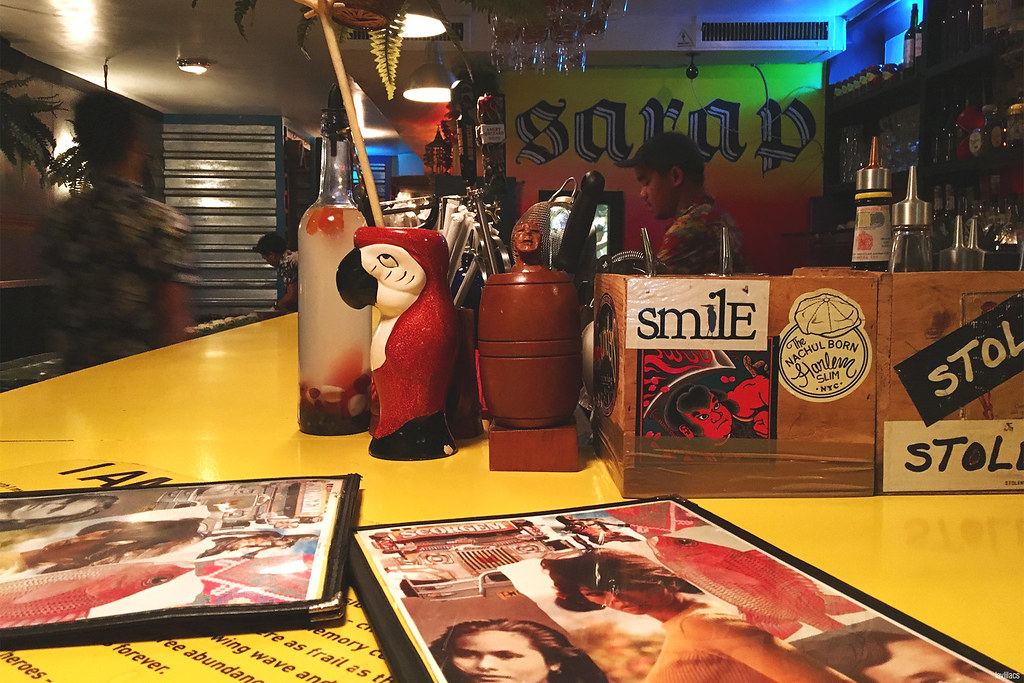
Even on the Kamayan Nights, they have space for customers who want to order plates of food as well. There is quite a lot of bar seating and side-by-side chairs near the front of the restaurant.
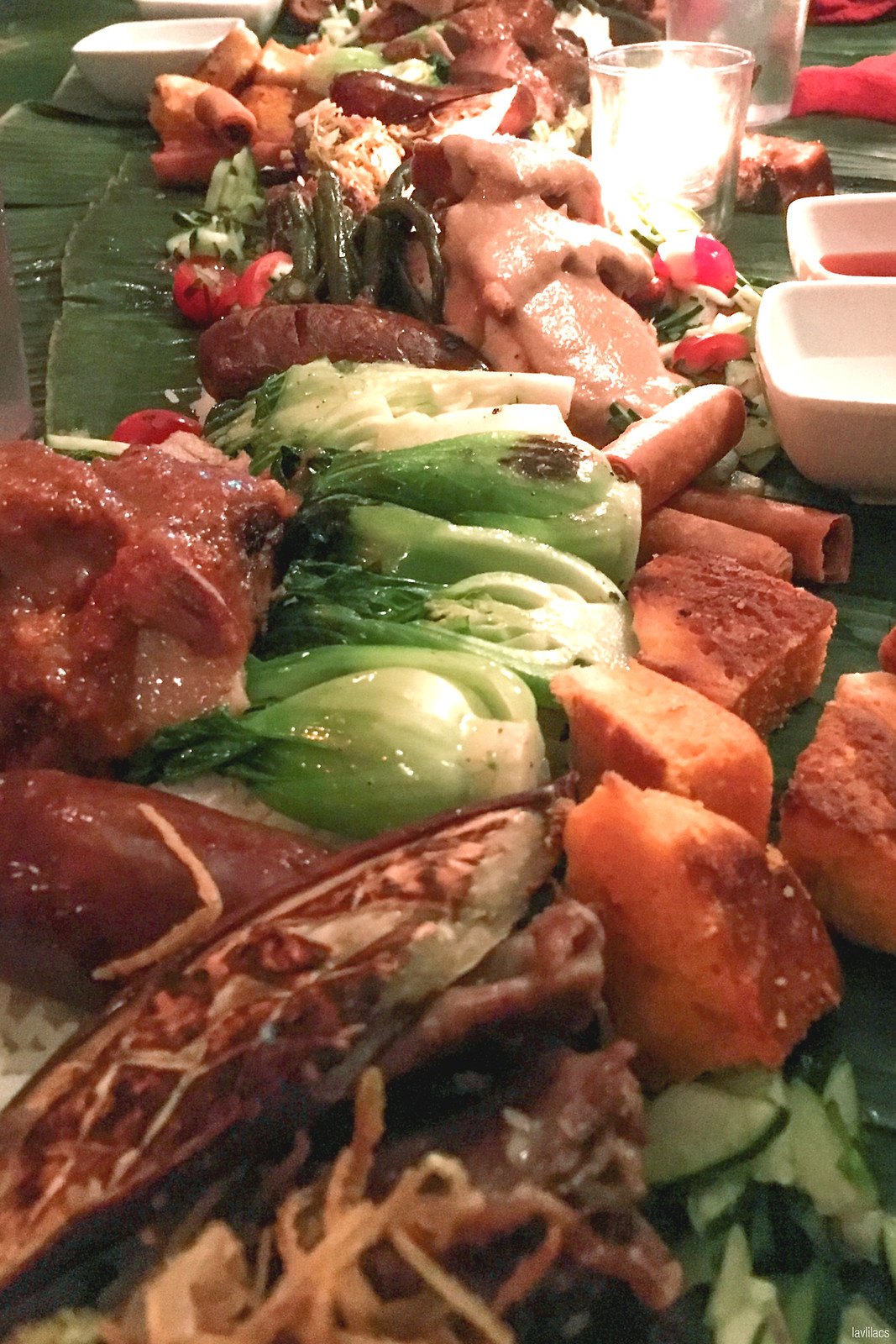
The staff starts to assemble the dinner spread when they've confirmed most of your party arrived. It takes maybe around 15-20 minutes to have everything ready before everyone could sit. The waiter or waitress will hand out hot towels, explain each component, and how properly eat & dip foods Filipino style.
It might look like a mish-mash of food, but everything is placed with thought. The same grouping of food replicates 6 times down the row for our group of 6 diners. Everyone theoretically has their own area to cover but where is the fun in that when food is display this way? We gave little thought to sticking to what was in front of us and just picked whichever food we felt like eating, even if it meant dipping into "other's pile".
The below was the options we were given at the time. Jeepney might change some things up depending on availability and such.
Pulutan // Small Plates (Choice of 2)
Fried tripe - With spicy banana ketchup
Chicharon bulaklak - Crispy ruffle fat
Lumpiang Shanghai - Beef and pork, carrots, water chestnuts, xiao xing, rice paper
Tahong - Steamed mussels, tanglad, shallots, garlic, sili, San Miguel beer
Ukoy fritters - Julianned kamote, carrots, onions, rock shrimp
Banana ketchup ribs - Pork ribs, Filipino dry rub, spice banana barbeque glaze
Batangas bone marrow - Ginger, patis (supplement $2/person)
Ulam // Large Plates (Choice of 3)
Adobong hipon - Head on shrimp sauteed in garlic, ginger, vinegar & bay leaf
Inasal na manok - Roasted chicken marinated in lemongrass, calamansi, soy sauce & achuete butter
Bicol express - Slow-roasted pork shoulder, coconut milk, sili & bagoong
Dinuguan & puto - Boneless port sholder, beef blood, suka, sili, bay leaf, San Miguel lager, served with crispy puto pancake
Kare kare fried chicken - Boneless crispy chicken, peanut butters sauce, pickled long beans
Short rib pares - Braised short rib, star anise, caramelized onion, fried leek, eggplant a la plancha (supplement $4/person)
Dampa fry - Whole market fish, fried hard served with blistered chilies, scallions & escabeche (supplement $4/person)
Rice (Choice of 1)
Jasmine rice - plain rice
Garlic rice - Pinoy staple for garlic lovers with garlic chips (supplement $1/person)
Chino-Latino coconut - Coconut rice with toasted coconut flakes (supplement $2/person)
Drinks
They offer a bunch of options for unlimited draft beer, cocktails, premium alcohol for $25-55/person. Since our group, in general, aren't heavy drinkers we chose to order drinks separately the day of.
Cost & Fees
Base cost: $45/person
Additional food supplemental fees: varies from $1 to $4/person per dish
NYC sales tax
20% service charges (18% tips + 2% admin fee)
Cancellation fee within 48 hours of reservation: 50% of total bill
Cancellation fee or no-show on day-of: 100% of total bill
Our total that night, including tax, service fee, and 1 supplemental food fee: $64/person
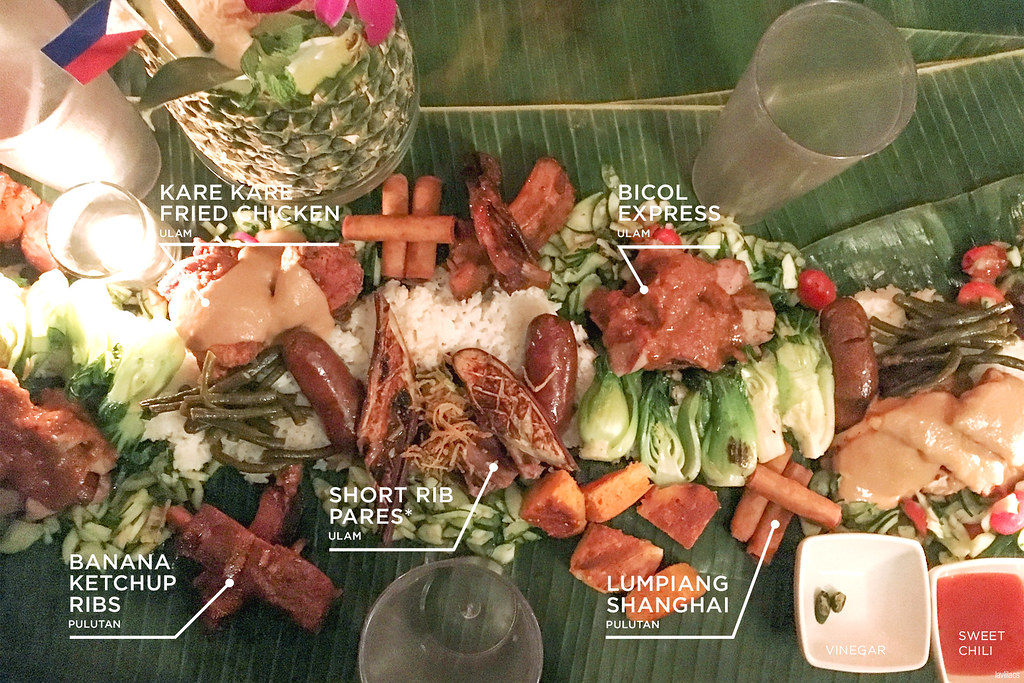
I think the hardest part about Kamayan night is choosing which foods to order from their selection. It seems that no matter the party size, groups are limited to 2 "appetizers" and 3 "entrees". Everything they described just sounds so delicious. If it wasn't Kamayan Night, we could have easily ordered a few more of the "pulutan" and "ulam" dishes to share.
My friends all agreed that both the Banana Ketchup Ribs and Lumpiang Shanghai were bomb. The meat on the ribs completely fell off the bone and was very juicy and saucy. Where has banana ketchup been all our lives?? Even though it would have been nice to try some of the more unique appetizers, the lumpiang (spring rolls) gave a much-needed crunch amidst all the soft and tender meats.
Of the main meats we chose, favorites were pretty unanimous: Bicol Express, followed by Short Rib Pares, and then Kare Kare Fried Chicken. The slow-roasted pork shoulder (Bicol Express) had the right amount of sauce and the meat was amazingly tender. We loved covering the rice with that magical sauce. While we enjoyed the fall-apart braised short ribs, it would have been even better with more sauce. It wasn't lacking in flavor, but some pieces needed the extra juice and moisture. The fried chicken meat, on the other hand, was a tad too dry especially considering how large the each piece was.
If I were to ever eat at Jeepney again, not just for Kamayan but even for regular service, I would love to try their dampa fry (whole fried fish). It seems to be a pretty popular choice on Yelp and I noticed quite a lot of them on the service counter when we were eating that night.
The longanisa (sweet Filipino sausage), sweet orange-tinted bread (possible coconut flavored), cucumber salad, and Shanghai bok choy seem to be included no matter what sides and mains are chosen. Vinegar is recommended for dipping almost anything on the table into; it serves to cut the sweetness and grease. The sweet chili is typically reserved for the lumpiang.
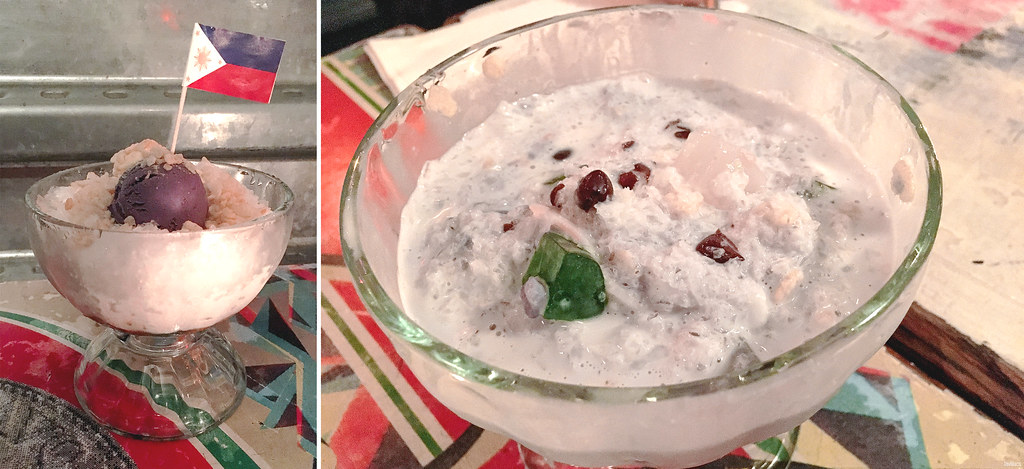
We were told a Filipino meal isn't complete without ube (purple sweet potato) and halo halo (mixed ice dessert with sweet beans, jello, and evaporated milk). There aren't any options for dessert with the Kamayan feast, but the Halo Halo was much appreciated after all the heavy foods. We were given 2 bowls to share amongst the 6 of us.
The staff even gave us a round of complimentary ube shots! It could have been that he knew someone in our group or because they found out we were celebrating multiple occasions that night.
My friends and I devoured a good 75% of the food on the table. We only had enough leftovers for 2 loosely packed boxes. I would definitely not recommend gorging until you are silly and delirious because we were seriously full that night for ages. It was harder to control how much we ate since the food was in a big 'ole pile. Just remember to pace it out and take smaller pinches of food instead of handfuls. No one will judge you for leaving a ton of food at the end. In fact, I think it is very appropriate in Filipino culture to have leftovers pack for home.

Sometimes the little things are easy to miss: the way signs are designed, the way everyone stands or doesn't stand on a line, to even how tableware is offered. These are the kind of differences that are just there, a part of everyday life, and easy to dismiss. But once those subtleties are discovered, it opens a new world of observation.
*Warning: Info heavy! But I am only going to scratch the surface of each since this is just for comparison's sake. I didn't realize how much I actually had to say...

New York City has the MTA. Hong Kong has the MTR. Guangzhou has the Metro. When land is wide and people aplenty, trains and subways are usually more efficient and effective at getting where one needs to be. Unless you are rolling in money or can have your transport fees compensated for, most people take mass transit when traveling.
Granted the MTA is old and there is only so much they can fix without making it a, even more, pain in the butt for the millions of daily riders. A girl can dream—hoping for contactless Metrocards, reliable "Next train's arrival" signs, and staircase exit numbers and directories.
Above Ground Station Signs
NYC: White text on black, followed by colorful circles with either a number or letter. Many stations also have green globes or half green half white globes, usually on pillars, next to the black signs.
*Subway and train are interchangeable in NYC. No one uses metro here. Outside of the 5 boroughs though...those are all trains.
HK: 1) White text on navy, usually next to a maroon logo. 2) Navy text on silver, next to a maroon logo. 3) Maroon logo only.
*Subway and metro are 2 very different things in Hong Kong. Metro is almost exclusively the rapid transit. Subway could also mean an underground walkway that goes below a big multi-lane road.
GZ: All white text on red. Shows their logo, station name, and entrance/exit letter.
Station's Exit Signs
NYC: Exit signs will only tell you what street the staircase is on and whether the staircase is NSWE on the block. It is pretty useless if one station has many exits that are close together. It is only helpful you know exactly where you want to go and where that location is in terms of NSWE to where that particular staircase is. To be honest, who knows that right off the bat or has the time to think of that in such a short amount of time?
HK: There are generally loads of directories to point towards exits which are lettered A to whatever. Each letter is typically associated with at least one specific nearby destination: street names, malls, schools, hotels, museums, etc. It is particularly useful if you have access to a phone map and can give yourself some context of the surroundings. The exit letters are only available on the inside of the stations or very discretely on the side of an entranceway.
GZ: Like in Hong Kong, exists are also given letters and corresponds to a local landmark. Unlike in HK, the exit letter is also posted on the entrance side of the metro. This is useful if you have to meet someone at a certain station and can then name a specific entrance letter versus "the one on so and so street, you know next to the shop".
Transit Card/Fares
NYC: Pay per ride Metrocards, weekly cards (1 time pay for 7 consecutive day use), or monthly cards.
The fare is standard no matter the distance. Allowed 1 transfer to a bus or from a bus within a 2-hour period. A Metrocard costs an additional USD $1 and can only be used for the MTA. It can only be swiped to take the subway or inserted to take buses, it is not needed to re-swipe when leaving the station.
HK: Round trip station-specific tickets or the Octopus card.
The fare differs depending on the distance traveled. An Octopus card requires an HKD $50 refundable deposit and an initial HK $100 stored value. Possible alternatives to the card are ornaments (phone charms, key rings, watches etc.) and special phone SIM cards. All versions are contactless and can be used across multiple modes of transit (subways, buses, taxis), public payphones, vending machines, and convenience stores. Unlike in NYC, the smart chip enabled card or charm needs to be tapped when both entering and leaving.
GZ: Single-trip token ticket, 1-day pass, 3-day pass, Yang Cheng Tong Smart Card.
The fare differs depending on the distance traveled. (I believe) The single-trip and day-passes have no deposit fees. The Yang Cheng Tong requires an RMB 30 refundable deposit fee. All are tap-only and can be used on multiple transits and at some consumer stores, needs to be tapped when entering and leaving as well.
Transit Operation Times
NYC: 24 hours. Trains and buses at off hours are just more sparse.
HK: 5:30 AM to 12:30 AM.
GZ: 6:00 AM to 11:30 PM.

Platform Safety
NYC: Barrier-less. The only thing keeping you safe from an oncoming train is yourself and your senses. Pushing, whether accidentally or not, is a thing. "Be careful of the oncoming train traffic. Standing on or at the yellow platform edge strip is dangerous."
HK & GZ: Most stations, outdoor and indoor, have a glass barrier sliding-door mechanism. Floors have arrows to direct the waiting crowd.
Platform Etiquette
NYC: If you're lucky, people waiting for the train will be nice enough to step to one side when the doors open. It is more normal for people to do whatever they want and have a "me first" mentality.
HK: People in Hong Kong mostly follow the arrows and allow space for alighting passengers to first leave. When it is peak rush hour, the HK MTR even has uniformed attendants directing traffic: how much more people can go on safely, which doors are less crowded, etc.
GZ: I can't say for sure what Guangzhou is like since I took the train at off-peak hours only a couple of times.

Escalator Etiquette
NYC & CN: If the waiting situation is any clue, the escalators are also a "do whatever" kind of style. Most of the time it is zig-zagging, on rarer occasions it might be some kind of an off-to-one-side situation. Apparently, some reports say this is actually more efficient and doesn't force a crowd at the starting point.
HK: Being on escalators in Hong Kong was a little weird at first. It is easier to follow the crowd and step to the right side when I was one person. When I was with someone else, we were more than likely to stand next to each other and effectively block the walking zone. Once I got the hang of it, standing ahead of my companion and following the local mannerisms wasn't too difficult.
As someone who usually waits for people to get off the train first in NYC, I thought to allow a walkway was a neat idea. It is good for those really in a rush. But I do see where the studies come from when they say the single-file system is slower and potentially more dangerous. Just stay put and let the moving stairs do its thing!

Elevator Numbering
Other than the fact that some Chinese elevators don't have a specified 4th floor, because 4 in Chinese sounds similar to the word for death, I found Hong Kong's floor labeling situation very difficult to adjust to.
NYC & CN: Most street level floors start at 1 and ascends. I want to say a majority of the underground levels become B or B1, B2, and so on. But don't quote me on that because not many places have multiple underground floors.
Most elevator sensors in NYC are pretty forgiving if anyone is anywhere near the doors. Of the ones I rode in China, I felt like most were unforgiving. Unless the button is pressed at a precise moment, a hand or anything else placed between the closing doors be clamped on.
HK: The street level floors in Hong Kong all begin with G for Ground level and continues to 1 and above. I can't count the number of times I or my mom or Aunt pressed the 1st floor button wanting to go to G. I remember the first time I asked for directions in a mall and was directed to go to the 1st floor but upwards, my brain had to do a double-take.

Internet Speed & Access
HK and NYC are more or less equal in terms of access. Nothing is particularly forbidden unless a company or specific place limits certain sites and apps for their own business benefits. The major difference comes in the internet connection speeds. I cannot say what the specific numbers were; browsing the internet in Hong Kong, whether at the airport or in most hotels, just felt faster than in most places in NYC.
China is a whole different beast. It is no surprise that it has the worst accessibility, maybe second to North Korea. Most websites and apps that non-China based humans frequent are unloadable. The minute I crossed the border from Hong Kong to Shenzhen, China, the cellular provider ends and so does the connection to the world (quite literally). Surprisingly, notifications still came through but it was impossible to actually load the app. WeChat and local phone calls were the only forms of communication I had there and even that required a new China SIM card.
I have heard that if your service provider at home has a global plan that covers China, it is possible to access everything. Otherwise, the VPN route wasn't necessary for me since I never stayed in China long enough to need the internet constantly on any given day. Internet speeds in most of the hotels, up and down China, big and small cities, were either at a bearable average speed or too slow to handle. It was less frustrating to turn on the TV to pass leisure time.

Smoking Culture
I know, it is impossible to find anywhere where cigarettes and nicotine do not exist. But at least in most developed/major cities where someone can smoke a butt is well regulated. If the sign says "No Smoking" or you'll pay a fine, it means it. If there isn't a sign, at least it is a widely followed practice to not puff inside.
The level of bearableness goes from most to least: NYC, HK, and then CN.
NY & HK: People seem to follow the rules and etiquette well. It just felt slightly less tolerable in HK because of the number of smokers in such a small compact space.
CN: While there do seem to be laws to control smoking, it didn't seem to be heavily enforced wherever I visited. Hotel rooms and hallways reeked of lingering cigarettes scent. Many restaurants that we ate at, especially in Taishan and Guangzhou, allowed customers to smoke...inside...at the table. Heck, ash trays were norms and burnt holes were abundant enough to be design elements on the table clothes.

Hotel Facilities
NYC & HK: Lobbies are commonly found on the street level floor of most hotels. No matter if the hotel spreads out height-wise or width-wise, the next closest and most common facilities to the lobby are the restaurant(s), gym, conference rooms, and any other extras. The guest rooms typically occupy the upper or outer perimeter. Hotels are places where visitors not only sleep in but for some to dine, wine, and relax at.
CN: I found the facilities at hotels in China very interesting. Unless it is a Western brand chain or luxury Chinese brand, gyms and conferences rooms were pretty non-existent. Restaurants were a must and "fanciers" hotels had multiple. Many of the hotels had karaokes in the same building or in a structure right door. In the China-based budget hotels I stayed at, thin walls and windows plus late night music blasting plus cigarette smell made for very terrible sleeps.

(Chinese) Restaurant Table Setting
NYC: I think I'll just apply this to most Chinese (especially Cantonese) restaurants in the USA and maybe Canada. The typical tableware that customers all get is a napkin, a plate, a teacup, and chopsticks. If you order rice or anything that is liquidy, bowls and spoons will be supplemented.
It is common practice to wipe down the tableware with the napkin before reaching for any food. Customers are expected to eat off the plate. Waiters, who are usually also bus boys, will come around periodically to replace dirty/filled platters with new ones.
HK & CN: Bowls and spoons are included in the tableware set. Rather than to eat off the plate, food is expected to be placed in the bowls and scraps/bones on the plate. There is less of a need to collect and replace dishes.
The biggest difference I had to adjust to was the cleaning of tableware with piping hot water or tea before eating. Even if the set is distributed in sterilized plastic covering, it is always re-sterilized with hot liquid for good measure.

Dimsum Ordering
NYC: Dimsum is a must eat whenever my family travels anywhere. The first breakfast meal my parents looks for is to go yumcha. Even in the USA and Canada, I think New York City is one of the few, if not only place, where dimsum is still served in push carts. Most places elsewhere have everything cooked to order via a checklist system. I personally prefer the carts because I like to see what I am going to get. I can still make some kind of judgment even if I don't know what the name is.
HK & CN: The checklist system is probably a more efficient method. Most food is cooked to order and minimizes the amount of stuff that sits out. Restaurants could hire fewer people to walk around to push the carts. More tables and chairs could be put out to make up for space not needed by the steamer on wheels.
Unless the menu has photos thought, which they rarely do at non-tourist spots, it is difficult for non-Chinese reading customers to order. I guess it adds to the fun of trying local spots, eh?
Dimsum Culture
NYC: While Cantonese restaurants serve dimsum every day of the week from opening until around 2 PM, the restaurants are busiest from 11 AM until 2 PM. Customers who frequent early in the morning are the every-dayers and retired folk. Numbers are given out by the host when rush hour hits. Sometimes the numbers make sense, typically it doesn't. It is most beneficial to know someone working there.
HK & CN: The homeland of dimsum and yumcha, of course, offers it every day of the week. The time ranges people visit and the restaurant service times were unfamiliar. A majority of people prefer to go for early morning dimsum (before 10-11 AM). Then there seemed to be a sort of second dimsum session in some places during the lunch/early afternoon hours where prices are slightly different. I even went to a restaurant for late night dimsum for dinner once and heard my mom's friends say they wanted to meet for late night dimsum after dinner (past 9-10 PM) as well. That was a concept completely new to me.
I have heard of all-day dimsum only establishments before, i.e. Tim Ho Wan and Nom Wah. But Cantonese restaurants that also had dinner service who ended their nights with dimsum felt slightly bizarre. Almost wrong, but somehow right; they have to prepare for dimsum service the next day anyways, I guess?


